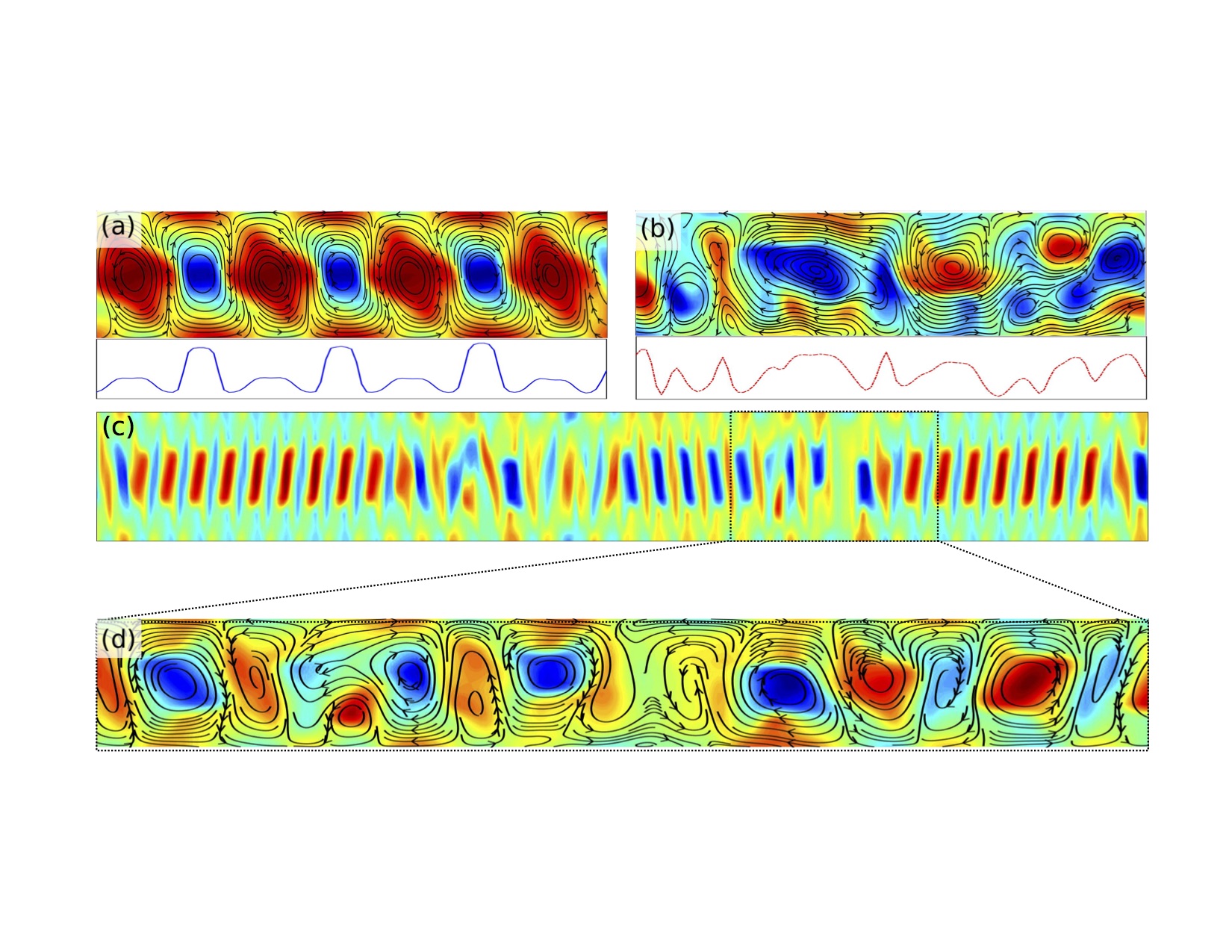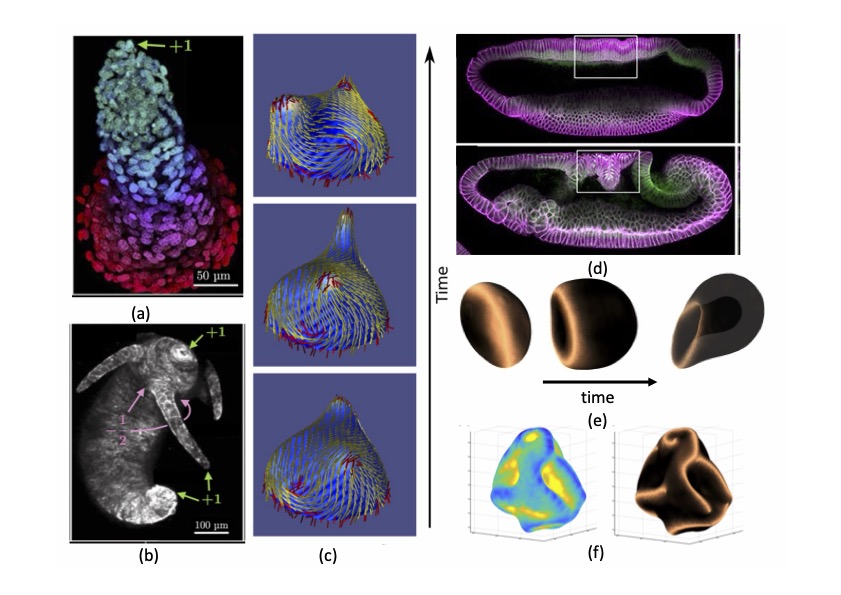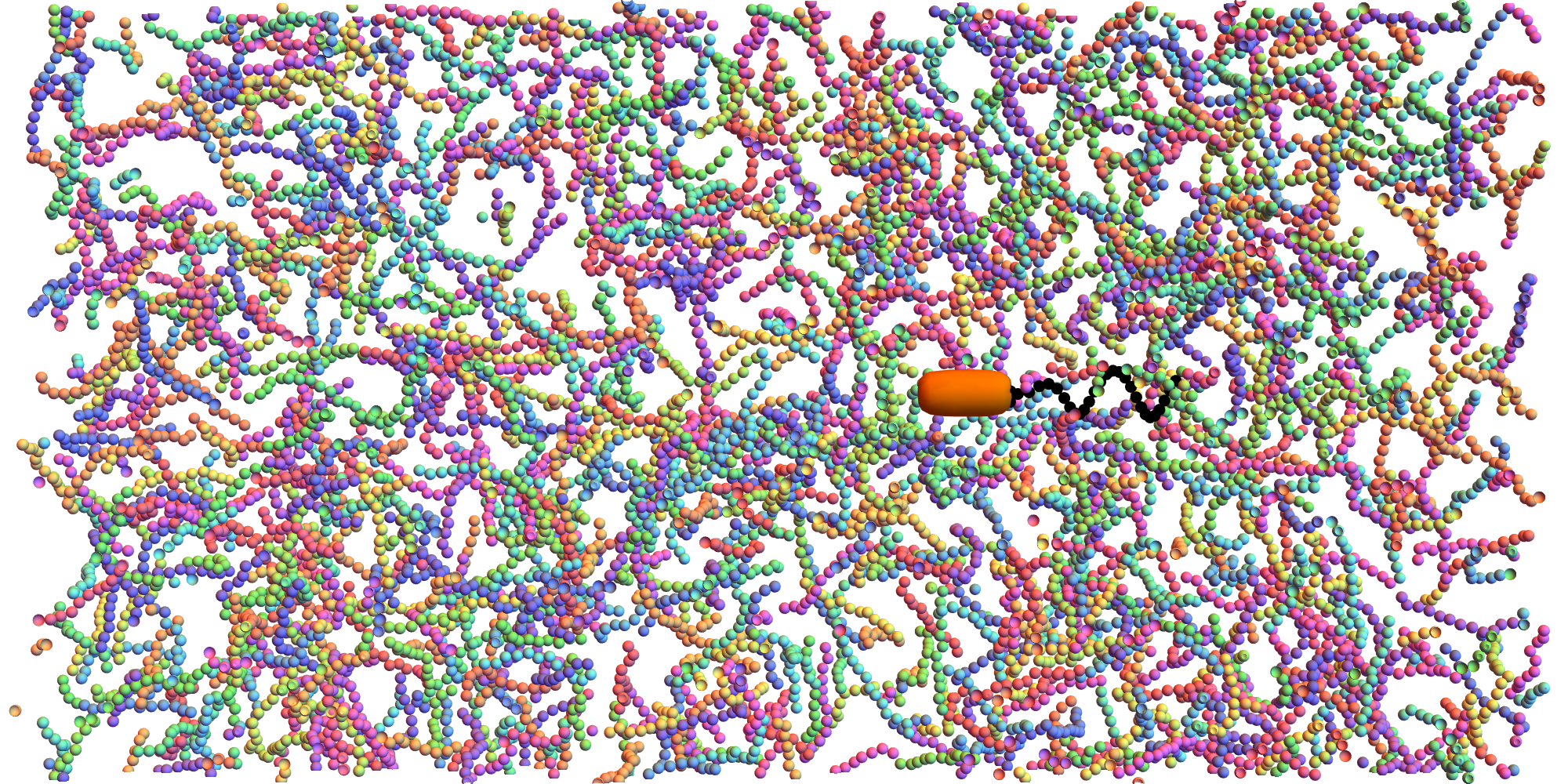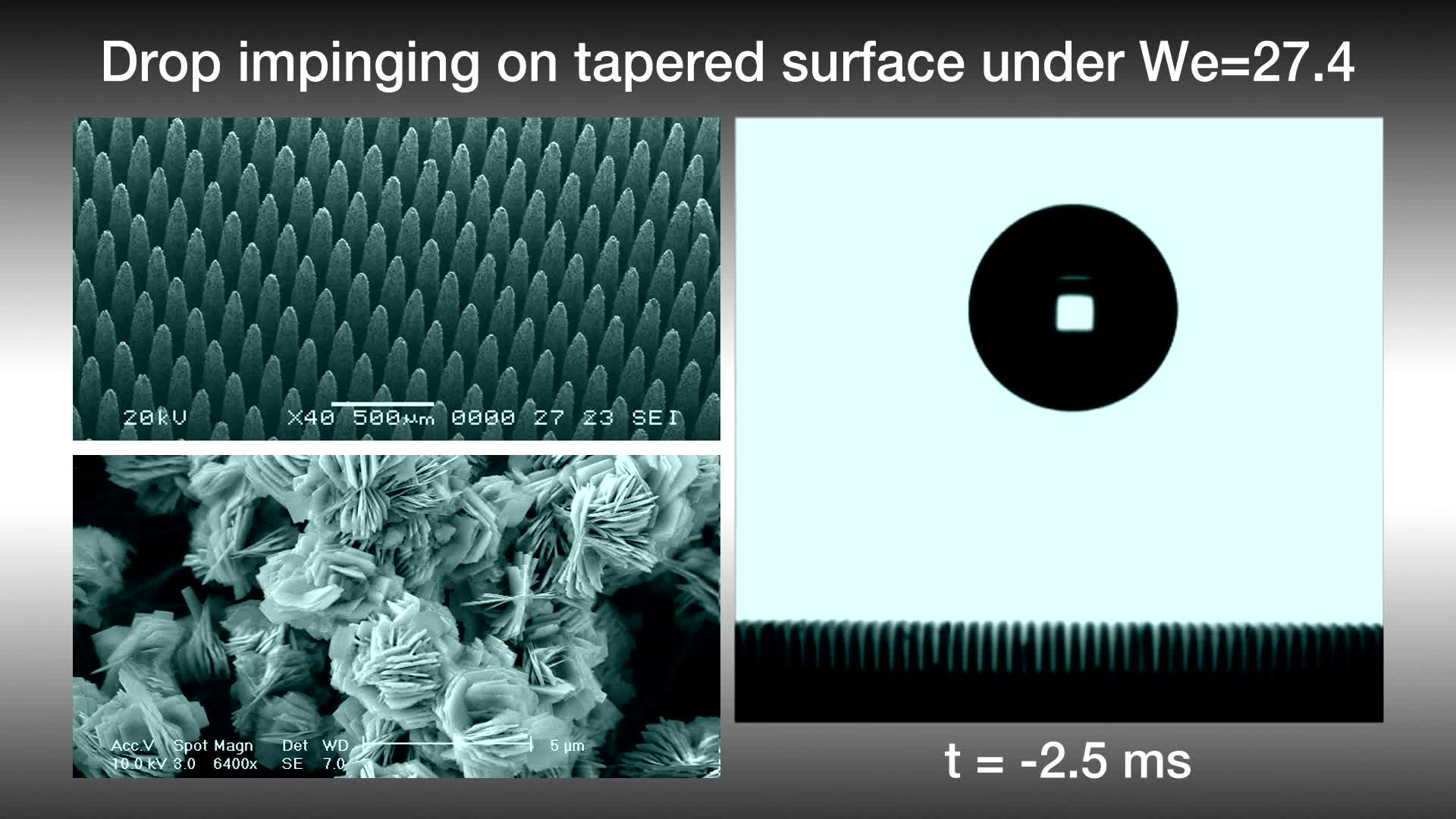
|
Oxford Physics: Soft and Living MatterJulia M. Yeomans OBE FRSProfessor of Physics
|

|
|
|||||
|
Active systems are collections of particles that continuously take energy from their surrounding and use it to do work. Examples include bacterial colonies and living cells. Hydrodynamic instabilities are inherent to active fluids, and
active suspensions spontaneously generate complex flow patterns at length scales much larger
than the microscopic constituents. These are characterised by strong variations in vorticity and
topological defects that are self-propelling.
Such turbulent-like patterns have been observed in experiments on mixtures of actin or
microtubules and motor proteins designed to isolate the important ingredients leading to
cellular motility and in dense suspensions of swimming E-coli.
|
|

|
Emergence of active puffs from a vortex-lattice controls the transition to turbulence in living fluids. (a) A highly ordered flow vortex-lattice is formed at lower activities when an active fluid is confined and (b) active turbulence is fully established at higher activities. Lower panels in (a), (b) show the height-averaged enstrophy signal along the channel. (c) Coexistence of the vortex-lattice and meso-scale turbulence close to the transition point. The zoomed-in panel in (d) illustrates the formation of active puffs from the vortex-lattice. Colormaps show vorticity contours with blue and red colors corresponding to clockwise and anti-clockwise vortices, respectively. The average radius of vortices is 0:32h, where h denotes the channel height. |
Back to Julia Yeomans' homepage
|
Growth, motion and morphogenesis are features common to all biological systems. Chemical energy allows biological cells to function out of thermodynamic equilibrium and to alter their number, size, shape and location. For example the marine polyp Hydra can re-form its body and grow tentacles starting from a small, excised piece of tissue. The zygote that results when a mammalian egg and sperm cell fuse, divides to form a ball of cells, the blastocyst. Collective cell migrations and remodelling then drive the tissue folding that determines how cells are positioned before they differentiate to grow into the stunning diversity of different living creatures. The development of organoids and tumours is controlled by the confining properties of the viscous, extracellular matrix that surrounds tissues, and escape into the third dimension determines the growth of biofilms. The relevance of stresses, forces and flows is clear and it is now widely appreciated that it will not be possible to master the transformations of living systems without adding physical understanding to the biological advances.
The topic is particularly timely because of progress in the theories of active matter which describe the collective behaviour of systems out of thermodynamic equilibrium. We are using concepts such as activity-driven flows, motile topological defects, and active turbulence to study growth,
motion and morphogenesis across a diversity of biological processes in mechanobiology and developmental biology.
|

|
Morphogenesis: (a) Protrusion growth at a +1 defect in a layer of confined, spindle-shaped, C2C12 myoblasts (Nature Materials,21:588, 2022). (b) Hydra tentacles (Nature Physics, 17:251, 2021). (c) Dynamics of an active shell from solving the active nematohydrodynamic equations of motion. The protrusion grows at a +1=2 active defect (Phys. Rev. Lett., 123:208001, 2019). (d) Invagination in the Drosophila embryo (Mechanisms of Development, 163:103629, 2020). (e) Continuum simulations showing the invagination of an active droplet. (f) Wrinkles induced by contractile activity: left: coloured by curvature, right: coloured by angle of the surface director (Phys. Rev. X, 11:021001, 2021). |
Back to Julia Yeomans' homepage
Microorganisms have evolved to swim in complex environments. Often they move in
confined spaces, and in fluids crowded by inert particles such as colloids and
biopolymers. Our aim is to understand how their motion and swimming strategies are
affected by details of their surroundings, and how the environment is, in turn,
perturbed by the motion of the swimmers.
Prominent examples of biological fluids which contain high-molecular weight polymeric material include the extracellular matrix,
mucosal barriers and polymer-aggregated marine snow. Surprisingly there is some evidence that bacteria swim faster in these crowded surroundings.
Experiments do not, however, yet have the resolution to distinguish between the different theories predicting this. Therefore there
is a vital role for detailed numerical models that explicitly measure the fluid properties around the bacterium and
explore the consequences for locomotion. The figure below shows mesoscale simulations
of a model bacterium moving through a dense biopolymer suspension. The model reproduced the increase in swimming speed and allowed us to explain this in terms of
the distribution of polymers near the bacterium. For more details see
A. Zoettl andJ.M. Yeomans, Nature Physics 15 554 (2019)

|
Back to Julia Yeomans' homepage
We have worked extensively on fluid-structure interactions.
If a hydrophobic surface is patterned with micron scale posts it can become superhydrophobic.
The surface is strongly water repellent, and drops slide off very easily. There are many
examples where nature has exploited superhydrophobic designs, for example, on the surfaces
of leave to aid the run-off of rainwater. We used analytic and numerical approaches to
understand the pinning and dynamics of drops on micro-patterned surfaces.
|
|
|
 |